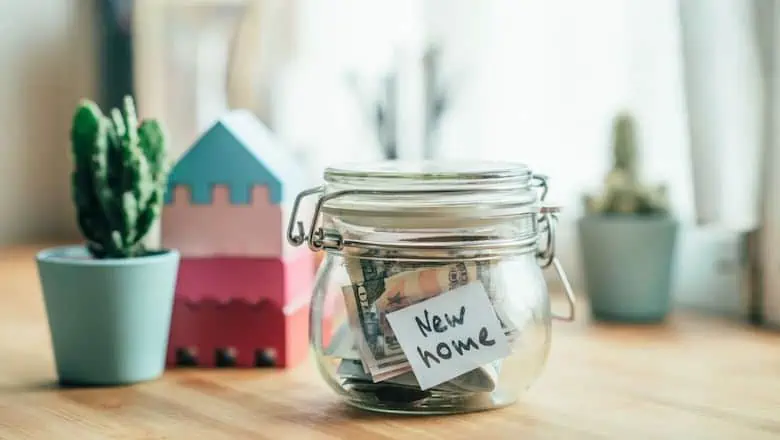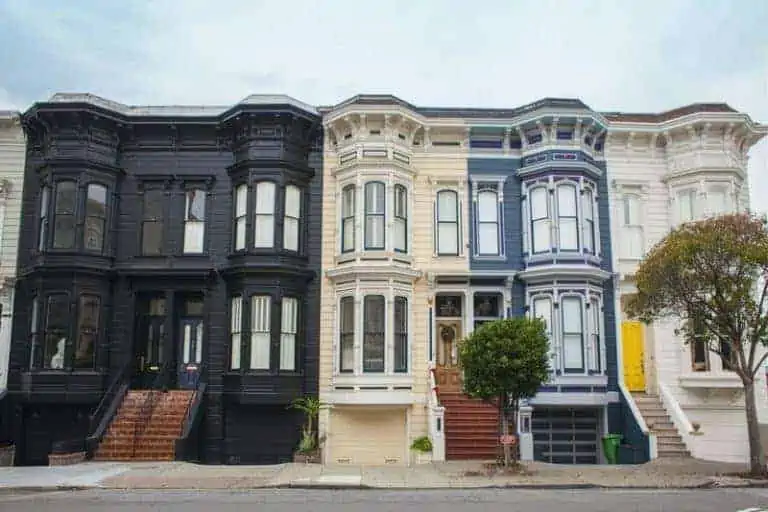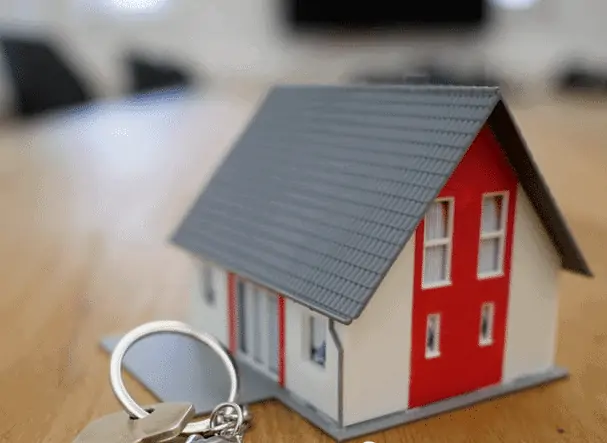Things to Budget For After Buying a Home
By Ashley Kilroy
Original post by Sofi and republished with permission.
After you purchase a new home, there are many things to budget for, such as moving costs, new furniture, and of course, ongoing expenses such as your mortgage. Although it may seem like many of the significant expenditures are out of the way once you close on a property, there are a lot of additional costs that can add up.
To avoid financial surprises, it’s wise to jot down and budget for all of the extra expenses you will encounter when you move into your new place. To help you organize your finances, here are the things to budget for after buying a house.
Recommended: Should I Sell My House Now or Wait
Moving-Out Expenses to Budget for
Before you take up residence in your new home, you must move all of your things. Even if you pack and move all your belongings yourself, you’ll still have to spend on things like boxes, packing materials, and a truck. And if you use movers, it will cost you even more.
Recommended: The Ultimate Moving Checklist
Moving Your Belongings
There are three main options for moving your belongings:
- Renting a truck and doing it yourself. It’s more cost efficient than using professional movers, but DIY moving yourself still adds up. You’ll have to pay for the truck rental fee, gas, and damage protection. If you’re moving across the country, you may also have to factor in the costs of shipping some of your items. Even though you can enlist your friends and family to help you do the heavy lifting, the cost of moving yourself can still be significant. And it’s a lot of work.
- Hiring movers. If you decide to use professional movers, it’s wise to shop around to find the best price. Here’s why: For moves under 100 miles away, the national average cost is $1,400, and it ranges from $800 to $2,500. If you’re moving long distance, the average cost can be as high as $2,200 to $5,700. To cut costs, you can do your own packing, which may save you money.
- Moving your things in a storage container. Another option is to use a hauling container — you load your things in it, and the container company moves it to your new location. This usually costs between $500 and $5,000, depending on the distance and how much stuff you’re moving. Long-distance moves will usually cost more than local ones.
Moving Supplies
If you decide to go the DIY moving route, you will need to buy boxes, bubble wrap, labels, and tape. And you likely have more items to wrap and box up than you think, which requires even more supplies.
Cleaning Supplies
You’ll probably want to clean your current property before you move out, and you’ll definitely want to clean the new place when you move in. That means buying mops, sponges, cleaning solutions, and paper towels. You may also want to get the carpets cleaned or hire a professional house cleaner if the place needs a deep cleaning.
10 Common Expenses After Buying a Home
Once the move is done, there are other expenses you’ll need to account for as you settle into your new abode. Here are a few things to budget for after buying a home.
Furniture and Appliances
You’ll likely bring some furniture and decor from your old place, but you’ll probably want to purchase some new things as well. For example, if the appliances are outdated, you might want to upgrade to new ones. And you may have more rooms to furnish, which requires additional furniture.
Consider opening a savings account for the new items you want to purchase. It can also help pay for any unexpected costs, such as having to replace a hot water heater that breaks.
Mortgage Payments
As a homeowner, every month you will making a mortgage payment that typically includes:
- The principal portion of the payment. This is the percentage of your mortgage that reduces your payment over the life of the loan. The more you pay toward principal, the less you will have to pay in interest.
- The interest. This is the amount you pay to borrow funds from the bank or lender to purchase your home.
If you are using an escrow account to pay your mortgage, other things may be included in your payment, such as your property taxes, insurance, and private mortgage insurance. This guide to reading your mortgage statement can help you understand all the costs involved in your mortgage payment.
Property Taxes
Property taxes are the taxes you pay on your home. In many cases, these taxes are the second most significant expense after your mortgage. Property taxes are based on the value of your home, which is typically governed by your state. The county you live in collects and calculates the sum due. Usually, property tax calculations are done every year, so the amount you owe may fluctuate annually.
Homeowners Insurance
Homeowners insurance helps protect your home from damage or destruction caused by events like a fire, wind storm, or vandalism. It can also protect you from lawsuits or property damages you are liable for. If someone slips and falls on your sidewalk, for instance, homeowners insurance will pay for the injured person’s medical bills and the legal costs if they decide to sue you.
The cost you pay for this coverage will vary by the type and amount of coverage you select.
Private Mortgage Insurance (PMI)
For borrowers who can’t afford a down payment that’s 20% of the mortgage value, lenders usually require private mortgage insurance (PMI). This type of coverage is designed to protect the lender if you default on your mortgage payments.
PMI can cost as much as a few hundred dollars per month, depending on the sum you borrow.
HOA Dues
This is a Homeowner’s Association fee, which goes toward the upkeep of property in a planned community, co-op, or condo. The amount can range from a couple of hundred dollars a year to more than $2,000, depending on the amenities you’re paying for (like a pool and landscaping). You typically pay HOA fees monthly, quarterly, or annually.
Utilities
Your utility payments include water, gas, electric, trash, and sewer fees. Some bills like water and electricity are based on the amount you use every month, so monitoring your electric and water usage, like taking short showers and turning lights off, can help lower your cost. Other payments, such as your trash or recycling, might be a fixed amount.
Lawn Care
Maintaining the curb appeal of your home requires landscape services and lawn care. If you choose to mow your own lawn, you may need to factor in the purchase of a mower, which can cost about $1,068 on average. If you hire a lawn service to cut your grass, you may pay $25 to $50 a week.
Pest Control
Pests such as ants, ticks, rodents, or mice, can wreak havoc on your home and your family’s health. For these reasons, many homeowners hire a pest control company to prevent the infestation of pests around their homes. The company’s initial visit may cost between $150 to $300, then $45 to $75 for every follow-up.
Home Improvement Costs
As a homeowner, there are likely things you want to change about your house. From painting the walls to a complete kitchen renovation, transforming your property can add to the cost of owning a home. According to the HomeAdvisor 2021 State of Home Spending Report, interior painting was the number one project homeowners completed, costing an average of $2,007.
Additionally, as the features of your home age, you will need to replace and repair them accordingly.
Common Mistakes After Buying a Home
One of the most common mistakes people make when buying a home is spending more than they can afford. For instance, you may forget to factor in utilities, lawn care, HOA fees, costs of upkeep, and other hidden expenses that come with owning a home. It’s crucial to do your research to determine extra costs and add them up before you move forward with purchasing a property.
Another mistake new homeowners make is taking on too many DIY projects. TV shows can make home renovations look easy. However, many of these projects require professionals who know what they are doing. Attempting a home improvement project could cost you more to fix than hiring a pro in the first place. In fact, about 80% of homeowners that attempt their own renovation projects make mistakes — some of them serious.
Unless you can afford an expert, you may want to rethink purchasing a home that requires a lot of renovation.
The 50/30/20 Rule
For help planning your budget as a homeowner, you can use the 50/30/20 rule, which breaks your budget into three categories:
- 50% goes to to needs
- 30% goes to wants
- 20% goes to to savings
That means you’ll be budgeting 50% of your income to go toward necessities such as housing costs, grocery bills, and car payments. Then 30% will go toward things you want, such as entertainment (movies, concerts), vacations, new clothes, and dining out. The remaining 20% goes towards saving for the future or financial goals such as home improvement projects.
Using a 50/30/20 budget rule is simple and easy. It allows you to see where your money is going and helps you save.
Recommended: What Credit Score is Needed to Buy a Car
Lifestyle Tradeoffs in Order to Budget
With so many things to budget for after buying a home, you may need to cut back on spending. Start by looking at your discretionary spending and think about where you can trim back. For example, instead of eating out regularly, you can cook more meals at home. Or perhaps you can put your gym membership on hold and do at-home workouts for a while to stay in shape physically and financially.
Recommended: What is The Difference Between Transunion and Equifax
The Takeaway
After you buy a house, there are many expenses you may not have accounted for, such as the cost of hiring movers; buying furniture; and getting your new place painted, cleaned, and ready to move into. Making a budget is vital to keep you on track financially, so you can enjoy your new home.
SoFi Relay’s money tracker app can help you organize your money all in one place. You can link your bank accounts, monitor spending and savings, and plan for future goals, like home renovations.With SoFi Relay, you’ll always know where your budget, and your finances, stand.
FAQ
How much money should you have leftover after buying a house?
After buying a home, the amount you have left will vary depending on your financial situation. However, it’s a good idea to have at least 3 to 6 months of living expenses in reserve. That way, in case of an emergency, you can stay afloat financially.
Is it worth putting more than 20% down?
Putting more than 20% down on your home can help lower your monthly mortgage payment and interest because you’ll be borrowing less money. It also gives you more equity in your home from the beginning. But make sure you can afford to pay more than 20% in order not to stretch beyond your budget.
What’s the 50-30-20 budget rule?
The 50/30/20 rule means that you budget 50% of your expenses for needs (housing, groceries, loan payments), 30% for wants (entertainment, eating out, shopping), and 20% toward savings goals (retirement, renovations, new furniture).
Photo credit: iStock/ArtMarie
SoFi’s Relay tool offers users the ability to connect both in-house accounts and external accounts using Plaid, Inc’s service. When you use the service to connect an account, you authorize SoFi to obtain account information from any external accounts as set forth in SoFi’s Terms of Use. SoFi assumes no responsibility for the timeliness, accuracy, deletion, non-delivery or failure to store any user data, loss of user data, communications, or personalization settings. You shall confirm the accuracy of Plaid data through sources independent of SoFi. The credit score provided to you is a Vantage Score® based on TransUnion™ (the “Processing Agent”) data.
Financial Tips & Strategies: The tips provided on this website are of a general nature and do not take into account your specific objectives, financial situation, and needs. You should always consider their appropriateness given your own circumstances.
SORL0522015






